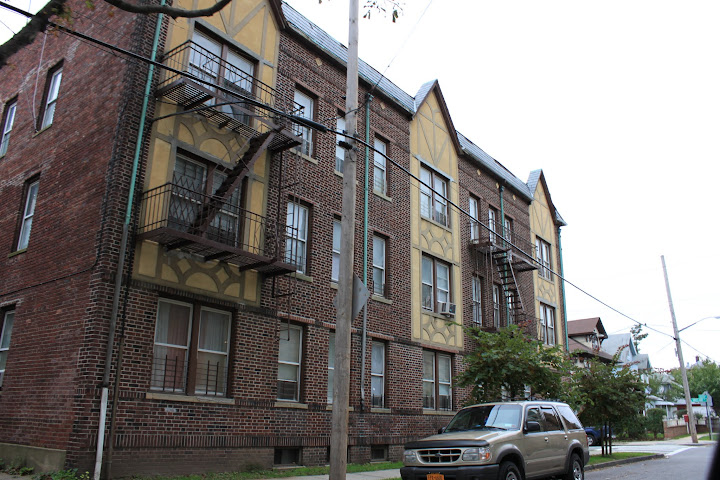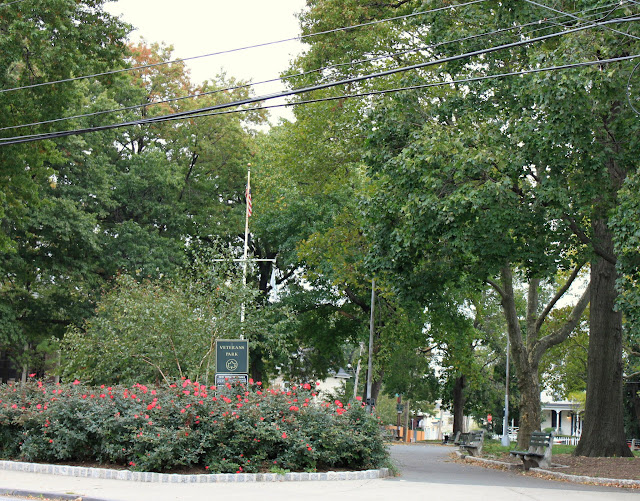Staten Island Neghbothood Profile: Port Richmond
See Homes For Sale in Port Richmond
 In 1661, the first permanent settlement was established on Staten Island. The years that followed saw the development of small villages, with a cemetery in the northern section of the Island that was in use until 1696. In 1715, the Dutch Church of the North Shore was built and subsequently, a community was formed around it, known as The Burial Place, due to its proximity to the cemetery.
In 1661, the first permanent settlement was established on Staten Island. The years that followed saw the development of small villages, with a cemetery in the northern section of the Island that was in use until 1696. In 1715, the Dutch Church of the North Shore was built and subsequently, a community was formed around it, known as The Burial Place, due to its proximity to the cemetery.
From that time up until 1866, the community was referred to by many names. These names, aside from Burial Place, included Bristol, New Bristol, Cityville, Cyrene, and Irvington. Additionally, Burial Place was known by the names of Bowman's Point, Collyer's Point, Decker's Landing, Lambert's Point, Mercereau's Landing, Mercereau's Point, and Ryer's Landing. This was because during the 1800s, a ferry was located on the waterfront, taking passengers into New Jersey. Throughout the years, the ferry's name was changed and so, too, was the name of its surrounding area. In 1866, however, the surrounding area was incorporated along with the rest of the villages in Staten Island, and became known as Port Richmond, a name that had become quite popular since 1835.
About one century after the name Port Richmond had become popular, a bridge was bei ng constructed between the Port Richmond and Bayonne, in New Jersey. On November 15, 1931, the crossing opened to traffic as the Bayonne Bridge. While this bridge may have been quite convenient for commuters, the ferry in Port Richmond remained open until 1962. As of 2007, the local s89 bus began to take passengers over the Bayonne Bridge to the 34th Street Hudson-Bergen Light Rail Station.
ng constructed between the Port Richmond and Bayonne, in New Jersey. On November 15, 1931, the crossing opened to traffic as the Bayonne Bridge. While this bridge may have been quite convenient for commuters, the ferry in Port Richmond remained open until 1962. As of 2007, the local s89 bus began to take passengers over the Bayonne Bridge to the 34th Street Hudson-Bergen Light Rail Station.
During the 1800s, Irish and German immigrants began to settle in the neighborhood of Port Richmond. At the time, factories were becoming popular on the Island. In Port Richmond, a whale oil processing plant was established. This plant remained open until the 20th century; however, it had been replaced by Dean Linseed Oil Works, a linseed oil processing plant, in 1869. Before closing down, the name had been changed to the American Linseed Company. While this plant had become popular, many other industries  were becoming popular, as well as prosperous, in Port Richmond. These included coal yards, lumber yards, and oyster harvesting businesses.
were becoming popular, as well as prosperous, in Port Richmond. These included coal yards, lumber yards, and oyster harvesting businesses.
In 1898, Port Richmond, along with the rest of Staten Island, consolidated into Greater New York. At that time, Staten Island was home to only three public parks. One of these was Port Richmond Park, the oldest park on Staten Island. It was established in 1836 between the streets of Bennett Street, Heberton Avenue, Park Avenue, and Vreeland Street, and did not receive its name until 1898, when Staten Island consolidated with the rest of the City to become Greater New York. In 1949, it was renamed as Veterans Park. A lone boulder sits within the park, close to Park Avenue, with a plaque attached to it. The plaque honors General John Sullivan's raid against the British, The Battle of Staten Island, which took place on August 22, 1777, during the American Revolutionary War. There are several places of interest surrounding Veterans Park. Across Bennett Street, to the north, you have Port Richmond's Public Library, which was constructed by Andrew Carnegie in 1905. To the left of the library is St. Phillip's Baptist Church, along with the Park Baptist Church, which is located across Park Avenue, to the northwest. To the south of Veterans Park is P.S. 20. Across Heberton Avenue, you will find the old P.S. 20 building, which was built in 1891, designated as a New York City Landmark on March 22, 1988, and now houses the Parkside Senior Apartments.
By 1920, the Isle Theatrical Corporation was established by three brothers: Charles, Lewis and Elias Moses. Throughout the 1920s, the company had constructed several theatres on Staten Island. One of these theatres was The Ritz, which was built by Sol Brill in 1924. The theatre, which was comprised of over 2,100 seats, turned into a venue for rock concerts during the 1960s and 1970s. The theatre is now being used as a showroom for by Pedulla Ceramic Tile at 251 Port Richmond Avenue.
Because the Castleton Bus Depot is located within Port Richmond, there are a number of conveniently placed bus stops in the neighborhood. There are four buses, which depart the St. George Ferry Terminal and pass through Port Richmond to get to their destinations: the s40, s44, s46, and s66. The s40 takes Richmond Terrace to Goethals Road North, while the s44 takes Richmond Avenue to the Staten Island Mall, the s46 takes Castleton Avenue to the West Shore Plaza, and the s66 takes Jewett Avenue to Port Richmond. You may also take the s53 along Clove Road to Port Richmond or Bay Ridge, Brooklyn, the s54 along Manor Road to West New Brighton or Eltingville, the s57 along Rockland Avenue to Port Richmond or New Dorp, and the s59 along Richmond Avenue to Port Richmond or Tottenville.
 There are also a few express buses which travel through the neighborhood. The x10, traveling along Richmond Avenue to the Verrazano-Narrows Bridge, and the s30, traveling along Forest Avenue to the Goethals Bridge, both go into Midtown Manhattan. The x14, on the other hand, travels along Clove Road to the Verrazano-Narrows Bridge and into West Midtown. The s89, as we mentioned earlier, comes all the way from Eltingville, travels along Richmond Avenue, and then takes the Bayonne Bridge into New Jersey. This bus costs the same as the other local Staten Island buses.
There are also a few express buses which travel through the neighborhood. The x10, traveling along Richmond Avenue to the Verrazano-Narrows Bridge, and the s30, traveling along Forest Avenue to the Goethals Bridge, both go into Midtown Manhattan. The x14, on the other hand, travels along Clove Road to the Verrazano-Narrows Bridge and into West Midtown. The s89, as we mentioned earlier, comes all the way from Eltingville, travels along Richmond Avenue, and then takes the Bayonne Bridge into New Jersey. This bus costs the same as the other local Staten Island buses.
There are almost one dozen public and Catholic schools in and around the neighborhood of Port Richmond. The nearest public schools are P.S. 19, at 780 Post Avenue; P.S. 20, at 161 Park Avenue; P.S. 18, at 221 Broadway; I.S. 27, at 11 Clove Lake Place; the New World Preparatory Charter School, at 2230 Richmond Terrace, and Port Richmond High School, at 85 St. Joseph's Avenue. There are also a handful of Catholic schools, including Our Lady of Mount Carmel – St. Benedicta School, at 285 Clove Road; the Blessed Sacrament School, at 830 Delafield Avenue; Sacred Heart School, at 301 North Burgher Avenue; St. Peter's High School for Boys, at 200 Clinton Avenue; and Notre Dame Academy High School, at 134 Howard Avenue. You can always check to see which school your child is zoned for by contacting your local public school.
For information about Port Richmond or other homes for sale on Staten Island, we are your home for Staten Island Realty. Please conact us at (718) 701-5626 for details.
